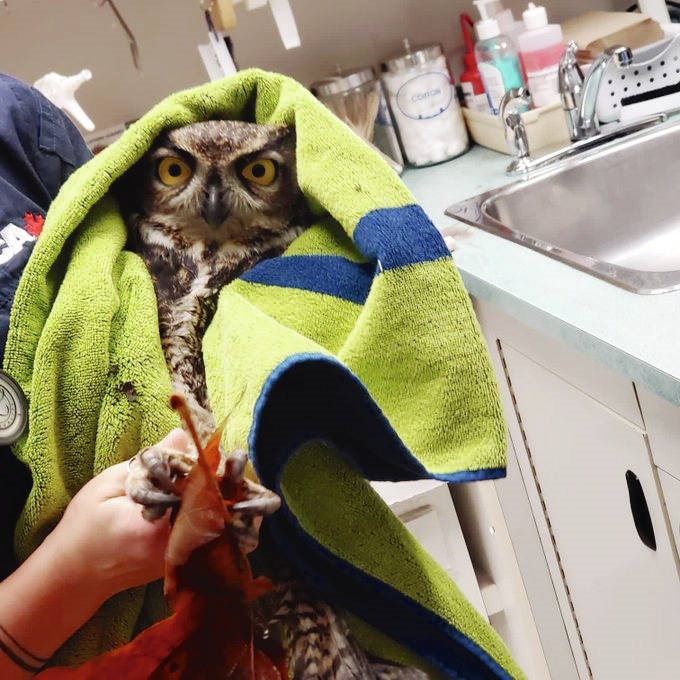Two great horned owls have been courting in a nearby park.
We can hear them hooting and cooing every night.
Sometimes we hear them during the day, too.
Even more rarely, we see them. One evening, Nature Boy stepped outside and looked up just as one owl flew past.
One day a few weeks ago, we were walking along the park’s edge when one flew up and settled onto a branch overhead. Its horns showed in silhouette against the sky as it stared down at us staring up at it. Then it lost interest, blinked, and turned its head in that 270-degree way owls have to scratch at a spot between its wings on its back.
This is the second winter the pair has made the park their home. They began cooing and wooing in November and, if this year is like last year, will keep at it until, well, any day now.
Great horned owls lay their eggs anytime from January through April, so this couple is due. They’ve likely already refurbished last year’s stick nest that had been built and abandoned by another bird of prey, or they’re found a roomy hollow in one of the park’s trees.
When the time comes, she’ll lay two or three eggs, then both parents will take turns incubating them over the 35 days or so until the little ones hatch.
The arrival of eggs usually quietens the nightly calling. Why advertise that you have eggs or chicks? That’s just inviting Trouble.
Or it may be that keeping eggs warm and dry and a mate fed and happy is exhausting work. As happens with young parents of many species everywhere, once they’re in the family way, the nights of partying and fine dining and tearing up the dance floor may just quietly end.
I find the nightly duet of chuckles and hoots comforting. The pandemic may have turned the human world topsy-turvy, but the owls just keep on doing what owls do. They’re courting. They’re canoodling. They’re hunting — and he’s sharing his prey with her. (Who needs a diamond ring when a freshly killed bunny is on offer?) They’re laying eggs. You know, the important stuff.
The calling also lets me know that they’re still around. It serves as a nightly check-in. “Yoo hoo (hoo-hoo hoo hoo hoo)!”
It means they haven’t been hit by a car. It means they haven’t yet died from eating poisoned rats.
At least seven owls discovered dead in the region last year are believed to have been killed by eating poisoned rats.
Rat poisons aren’t just lethal to rodents but also to their predators, as the poison can stay active for months. The poisons are powerful anticoagulants that kill their targets slowly by causing internal bleeding that doesn’t stop.
Because a single owl can eat as many as 1,000 rodents every year, owls are playing rodenticide roulette against poor odds simply by behaving like owls and hunting and eating rats and mice as nature intended them to.
A report presented to Sooke council last year revealed that 70 per cent of dead owls reported in B.C. between 1988 and 2003 had residues of at least one rat poison — and numbers are increasing.
That’s likely because sales and use of rat poisons also have been increasing. According to Owl Watch B.C., between 2003 and 2015, sales of one of the poisons, brodifacoum, increased by 19 per cent, while those of another, bromadiolone, increased by 279 per cent. Many of the pesticides can be easily purchased from local hardware stores.
Some municipalities have taken steps. Saanich, Oak Bay and Sooke are among at least 14 B.C. municipalities that have recently banned the use of rodenticides on their properties.
More municipalities are considering their own bans.
But such bans apply only to municipal properties such as parks, buildings, boulevards and maintenance yards. They don’t affect private and commercial properties, nor do they restrict pest-control companies.
For that, the B.C. government has to get involved. It would have to restrict the availability and use of the poisons – something the minister of environment said before last year’s election was not on the books.
Until that happens, Nature Boy and I will keep an ear attuned to our owl neighbours’ nightly calls.
Yoo hoo, how are you two-oo?



